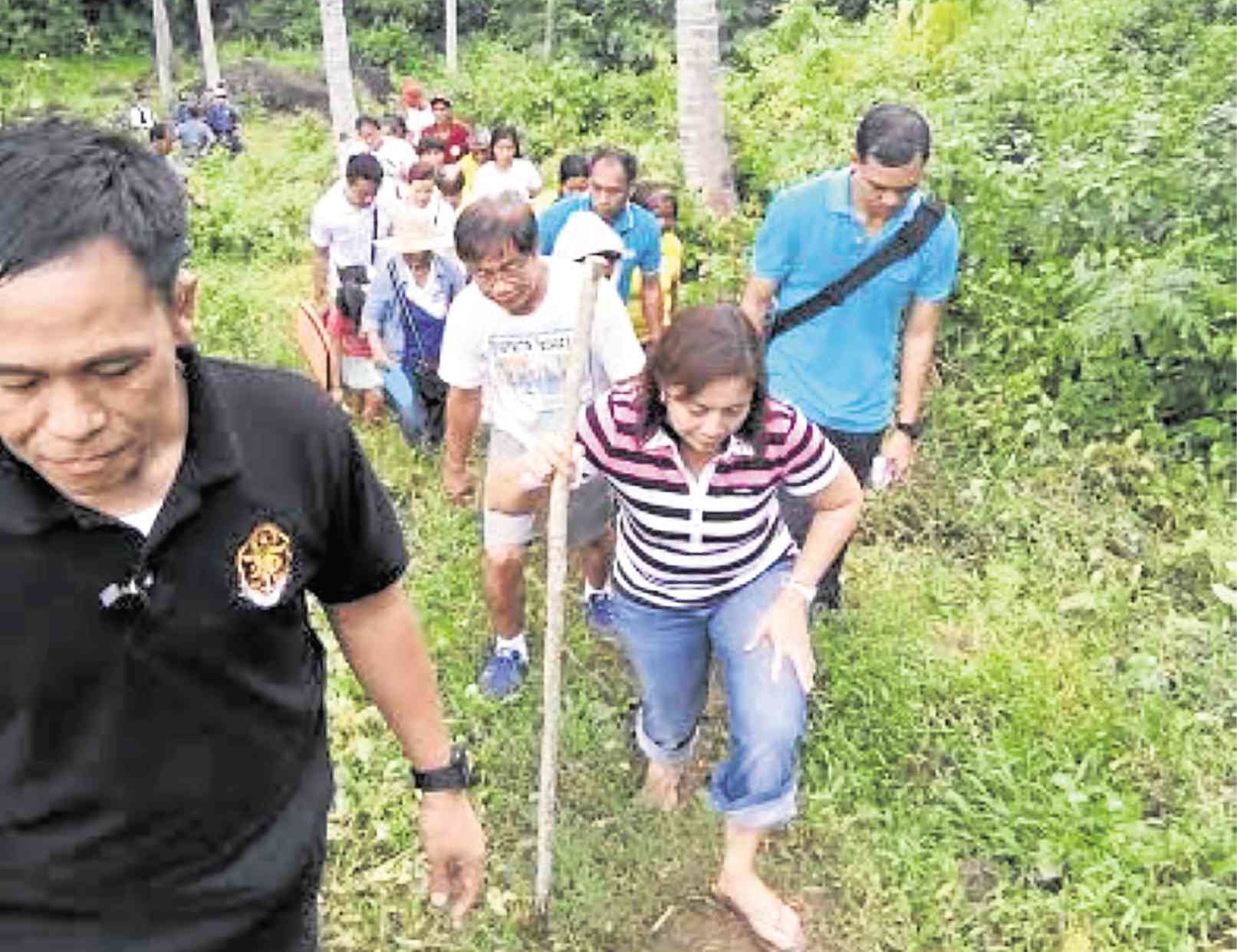Leni pushes ‘laylayan’ meetings

VICE President Leni Robredo and villagers negotiate a steep trail on their way to a consultation in the remote community of Zone 4 in Barangay Del Rosario in Ocampo, Camarines Sur province, on Saturday. JUAN ESCANDOR JR. / INQUIRER SOURTHERN LUZON
OCAMPO, Camarines Sur—Despite the drizzle, she trekked more than three kilometers to the upland village of Del Rosario here and met with 49 families living inside the national park of Mt. Isarog on Saturday.
Vice President Leni Robredo was keeping her promise during the recent election campaign to visit people on the margins (“laylayan”) of society on weekends and directly consult them about their needs which she, in turn, would refer to concerned government agencies on weekdays.
For 45 minutes, Robredo walked through an upward trail between bushes and coconut trees on the shoulders of Mt. Isarog as one of her “laylayan events.” She was accompanied by Del Rosario’s barangay chair, Francisco Buenavente, and a coterie of members of the Presidential Security Group.
The country’s second highest elected official and her staff met the mountain dwellers who prepared boiled bananas and young coconuts at a makeshift chapel. Robredo acted as facilitator.
Buenavente presented to the Vice President the infrastructure needs of his village before the consultation meeting. But Robredo told the residents that building facilities inside the national park was prohibited by law.
Article continues after this advertisementShe encouraged them to find landowners at the boundary of areas controlled by the Department of Environment and Natural Resources (DENR) where they may be allowed to build their houses. She said she would coordinate with the DENR in laying down an environmental program with the villagers actively participating to protect and reforest areas as stakeholders and guardians.
Article continues after this advertisementDanilo Llanera, a barangay councilor and officer-in-charge of its Zone 4, said illegal loggers were still active there.
Del Rosario residents, numbering about 300, rely on growing vegetables, root crops and abaca for their livelihood. Sometimes, they work in sugarcane plantations in the lower portion of the village in February, March, May and June, each receiving P150 to P180 in daily wage.
Llanera said some of the children had stopped going to school because they live more than 3 km away from the elementary school at the village center.
Robredo said the Department of Education could not really build a school there because the number of children was not enough to meet the requirement for school establishment aside from the place being part of the national park.
She said she could recommend to the Department of Public Works and Highways to build a road that can be used by tricycles to bring the children to school.
Consolacion Hamer, 69, revealed that when typhoons strike, people would run to a nearby cave for shelter. This surprised Robredo, who advised them to always heed the government’s typhoon advisory and to follow the order where they should seek shelter.